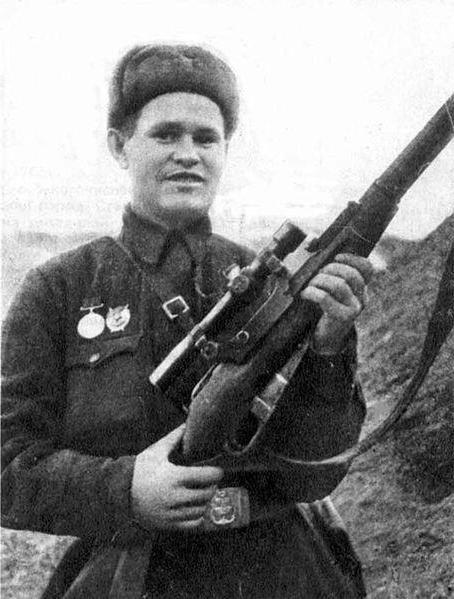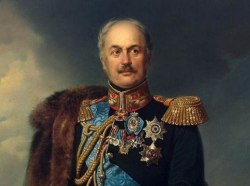On February 2, 1943, the most large-scale battle in world history ended. In the Battle of Stalingrad, it was involved on both sides of over 2.1 million people. The fights lasted for two hundred days and nights. They were conducted also in field conditions, both in the city, and on water, and in the air, and even underground. The fight began on July 17, 1942, and ended on February 2, 1943.
It is hard to tell precisely how many Pridnestrovians were involved in the Battle of Stalingrad. Special researches on this subject were not conducted. At the same time, the Stalingrad stories are described also in the domestic press, and in memoirs of the Pridnestrovian veterans.
However, there are also very interesting subject analogies in the historical and spatial interrelation of Pridnestrovie and Stalingrad.
«Colonel Malino». Pridnestrovie – Stalingrad – Pridnestrovie
The southern Pridnestrovie was freed by the 3rd Ukrainian front which was ordered by one of the heroes of the Battle of Stalingrad General Rodion Malinovsky. The inhabitant of Odessa and the participant of many wars, in winter 1943 he attacked Rostov-on-Don, but suddenly faced the German tank group of Manstein who went to help at this moment to the 6th army surrounded in Stalingrad. If «Colonel Malino» as Republicans called Malinovsky during the Civil war in Spain does not develop the army for reflection of the blow of Manstein and would wait for the order, nobody knows, then the Battle of Stalingrad could end.

Colonel Malino and marshal Malinovsky
By spring of 1944, Malinovsky had already had several armies which battled for Odessa, Tiraspol, Grigoriopol, Slobodzeia and created bases on the right coast of the Dniester. The last will play a key role in the Jassy–Kishinev Offensive in August 1944. At Kitskany the powerful blow will be struck and there will be a break of the front in which it will direct two powerful mechanized cases which will close a ring of an encircling of the German group. By the way, one of these cases (the 4th) took an active part in the 6th German army surround near Stalingrad. It is interesting that in Jassy–Kishinev Offensive parts of the Red Army had to deal with the 6th army of Wehrmacht again. But we will tell about it later.
It is symbolical that Malinovsky was in Pridnestrovie even in the summer of 1941, several years prior to Stalingrad. Then he ordered the 48th rifle corps which covered the Dniester from Yagorlyk to Belochey. On this site, Malinovsky's case constrained several weeks the German approach.
The Pridnestrovian Mamayev Kurgan of «General Storm»
On the southern outskirts of the village Butor, there is one of the biggest barrows of Eastern Europe. It was constructed of bricks and the turf by the people living in the territory of Pridnestrovie more than five thousand years ago. Today it is a monument not only ancient history but also the Great Patriotic War. Here in May 1944, there was a command post of the commander of the well-known 8th Guards army (former the 62nd) the General Vasily Chuikov.

Butorsky barrow
Both the army and its commander are well-known because in 1942 they kept in Stalingrad on the right coast of Volga and imposed on the Germans «street war». It allowed to open «eyes for the god of war»: the Soviet artillery on the left coast on coordinates «extinguished» each large approach of the Germans. Due to it, defeat was avoided and it was enough time for preparation of the operation «Uranium».
Then the command post of the General Chuykov was placed on Mamayev Kurgan which still is marked on topographic maps as the main height of Russia. It is a symbol of firmness and victory in the Battle of Stalingrad. In it, according to the will, also the General is buried.
In the spring of 1944, Chuikov's army participated in the liberation of Odessa, and then was thrown to Grigoriopolsky district. Such castling was made with an ulterior motive. The commander of the 3rd Ukrainian front Rodion Malinovsky believed that after a successful approach in March it is possible to take a descent Chisinau. The shortest way to it was through the Sherpensky base occupied on the right coast of the Dniester. Chuikov's army was ideal to this operation: during fights in Stalingrad, he brought tactics of street battles to perfection. It was the reason he was called «general Storm».

General Vasily Chuykov
But instead of the attack, Chuykov had to defend. And it was almost like in Stalingrad. The Germans also understood how dangerous the Sherpensky base was to them, and threw huge forces on its elimination. In the book «From Stalingrad to Berlin» Chuykov in detail describes battles for the village Pugacheny and crossings through the Dniester. The Germans allocated 50 tanks and self-propelled tools with the assistance of 40 bombers only for one of the attacks.
The General directed the defence course from the Butorsky barrow. From here all district is visible clearly. Analogies to Mamayev Kurgan arise by itself. Here he also watched the last air fight of the pilot Maria Kulkina in honour of whom the valley Tamashlyk is renamed.
Pridnestrovian «business trip» of Vasily Zaytsev
On the Sherpensky base also the legendary Stalingrad sniper, the most productive, cool and well-aimed battled. About it, the General Chuykov writes in the memoirs.
«In this fight for Pugacheny, the famous Stalingrad sniper Vasily Zaytsev who has already become a captain and as I have already written was wounded in both legs, ordered an antiaircraft company».

Sniper Vasily Zaytsev
In 1943 the hero of Stalingrad was seriously injured and actually went blind. He was urgently brought by plane to Moscow where after several operations performed by ingenious professor Filatov, Vasily Zaytsev managed to return sight. But sniper duels were over. Then the shooter trained for a new profession in the antiaircraft gunner.
The antiaircraft company of Zaytsev protected a crossing through the Dniester on the Sherpensky base. To it, the German tanks suddenly broke, and as Chuykov remembers, there was a real threat of destruction of all our group on the right coast. At this critical moment of an antiaircraft gun were developed and struck over open sights Panzer Battalion. This meat grinder ended for our fighters with a victory, and personally for Zaytsev – double wound.
«Uranium» and «Jassy–Kishinev Offensive» - coincidence and facts
Jassy–Kishinev Offensive which began with the territory of Pridnestrovie had similarity on the tactical style to the operation «Uranium» near Stalingrad. In both cases it was «classical Cannes»: powerful flank blows led to an encircling of the main forces of the enemy group.
As well as near Stalingrad, the main blows fell on sites where there were Romanian troops which were weaker then the Germans both in firmness and in combat training.
The encircling of the 6th German army became the result of both operations. It was the main striking power in Stalingrad, but it appeared «in a copper» and there was completely crushed. However, its banners were sent by the commander Friedrich Paulus with the last plane. By the military tradition banner is a kernel of the army, therefore, it was restored and became a part of the Southern Ukraine group.
Again created 6th German army in August 1944 resisted to connections of the Red Army again. Between them, there was the Dniester as in Stalingrad – Volga, and the same as in Stalingrad, the Romanians on whom all shock power of the 3rd Ukrainian front fell were «neighbours» of the 6th army. As a result, the 6th army one in one suffered the Stalingrad fate.









